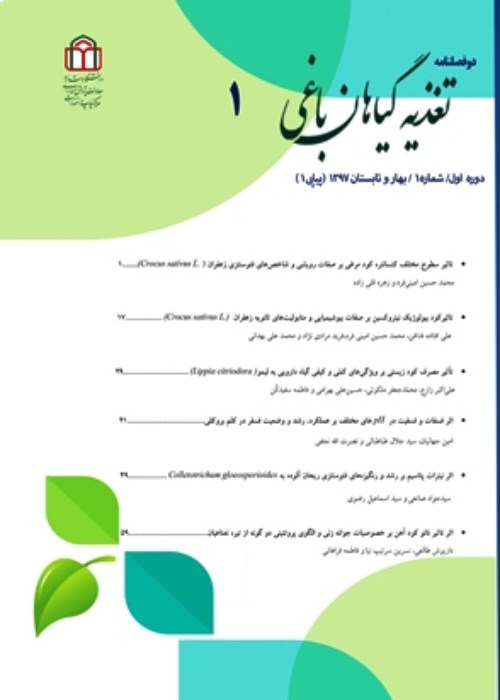The Effect of biological fertilizer nitroxin on Secound Metabolits of Saffron (Crocus sativus L.)
Nutritional management one of the main factors affecting chemical properties and yield of saffron. the aim of this research was to investigate effects rates of nitroxin on flower properties and second metabolites of saffron.
This experiment was carried out as randomized completely block design with three replications in research farm of Birjand University, Iran, during growing season 2015.Total phenolic wase determined using the Folin-Ciocalteu assay. Free radical scavenging activity of the samples wase determined using (DPPH) method. The main secondary metabolites’ crocin, picrocrocin and safranal were measured by Spectrophotometric approach according to Iran’s national standard.
Use of Nitroxin on the safranal (perfume) and crocin (color) Saffron significant effect at 1 percent And the picrocrocin (taste) at 5 percent,The highest rate of treatment safranal and Safranal nitroxin 5 liters per hectare, respectively, 17 and 46.57 percent and the lowest of control, respectively, 11 and 27.13 respectively.The treatment nitroxin 10 liters per hectare, an increase of 45 percent compared with the control Picrocrocin. The amount of antioxidants, phenols and anthocyanin petals were significant at the 5% level, the highest amount of antioxidants, phenols and anthocyanin in the treatment of 10 liters per hectare nitroxin by 35.66 percent, 83.26 and 23.74 mg per 100 g, respectively.
Generally, the findings of current study revealed that the use of nitroxin had strong impact on quantitive and qualitive properties saffron in this study.
- حق عضویت دریافتی صرف حمایت از نشریات عضو و نگهداری، تکمیل و توسعه مگیران میشود.
- پرداخت حق اشتراک و دانلود مقالات اجازه بازنشر آن در سایر رسانههای چاپی و دیجیتال را به کاربر نمیدهد.




